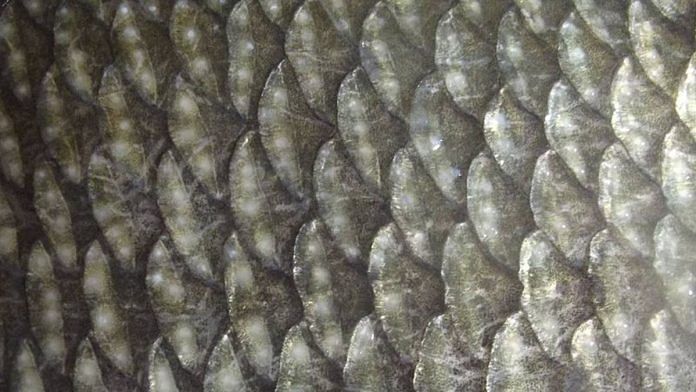New Delhi: A team of researchers from Guru Nanak Dev University, Amritsar, are familiar faces at the local fish market. Not because they are looking to cook delectable seafood dishes, but because they are on the prowl for something no one else wants — discarded fish scales.
Jaspreet Kaur, Harminder Singh, and the rest of the team is regularly seen working with other unwanted waste such as egg shells and animal hair. Their goal? Creating tiny generators that can power battery-less, flexible devices of the future using human movements. “Batteries are fabricated with lithium, which is not biodegradable — adding to the waste in landfills,” Kaur told ThePrint.
Last month, they published a study in the journal Sensors and Actuators A: Physical — a small part of their nearly four years of work aimed at creating a triboelectric nanogenerator (TENG) from plant and animal waste.
TENGs can be used to generate electricity from a variety of sources, such as the movement of a person’s body, the wind, or the flow of water. They are an attractive option for powering small, portable devices because they are light, easy to manufacture, and do not require a traditional power source like a battery or outlet.
Searching for a biocompatible, eco-friendly alternative, the researchers used fish scales to develop TENGs that could power motion sensors and battery-less Internet of Things (IoT) devices.
Singh, an associate professor at Guru Nanak Dev University and one of the researchers involved in the project, told ThePrint: “Traditional batteries are bulky and not flexible. We wanted to create a device that can generate energy from human movements that can be used for wearable devices.”
Fish-sellers are already enthusiastic about being able to contribute to the research. “They are telling us that they can help us identify other parts of the fish that could be put to such use,” he said.
Also Read: A tiny beetle-inspired robot for big tasks & how ancient meteorites delivered potassium to Earth
Fish scales to power 90 LEDs & a calculator
In their research, Kaur and her team used scales from Rohu fish as the dielectric (insulator) layer. The team first collected scales from their local fish market at zero cost.
Scales consist of different types of bio proteins — collagen protein, keratin, and chitin. They are highly electropositive, which means they quickly lose electrons when they come in contact with other dielectric materials, the team explained in their paper.
To develop TENG, the team washed the fish scales in distilled water and ethanol to remove unwanted organic material from the surface.
The washed scales were then dried and cut into uniform size of 1 square centimeter. A copper tape was used as a conducting electrode — the surface that would actually capture the charge generated. The copper tape was cut in the size of 3 cm x 4 cm. Then the scales were pasted on the adhesive side of the electrode.
The resulting device could generate electricity when it was rubbed or tapped. Using the device, the team was able to light 90 LEDs of two volts each and switch on a calculator.
Also Read: Is your blood type A? You may face higher risk of a stroke early in life, find US researchers
What is a TENG device?
It is a small device that can generate electricity from friction or motion. It works by using the triboelectric effect, which is the transfer of electrons between two materials that come into contact and then separate.
When two different materials are rubbed together, they can create a static charge.
Singh explained that, earlier, this static charge was thought of as undesirable. “We don’t want stray charge to build up on the surface of our high-power devices — like a fridge or a microwave.”
However, in 2012, a group at Georgia Institute of Technology in the US demonstrated that this kind of energy can be harvested by a TENG and converted into usable electricity.
The Georgia Tech group used polymer sheets to develop TENG. However, the team decided to look for substitutes in biocompatible products. In over four years of research, they have, so far, found that eggshells, animal hair and cotton fibres can be used to create these nanogenerators.
A TENG consists of two layers of material that are designed to rub against each other. One is made of a material that tends to give up electrons easily, while the other is made of a material that tends to hold onto the electrons.
As the two layers rub against each other, electrons are transferred from one layer to another, creating a charge. This charge can be collected by electrodes placed on the surface of the TENG and used to power small electronic devices.
Their applications are widespread — they could be used to power pacemaker devices and sensors in all kinds of wearable devices.
In remote areas, where electricity is unavailable, TENGs could be used to power a range of devices, Singh said.
The team will continue to work on improving their device and check its functionality in wearable devices. They are also continuing to explore different kinds of animal and plant wastes that can be used in such devices.
(Edited by Richa Mishra)
Also Read: ‘Another blow’ — Scientists worry as GST exemption removed for science equipment



